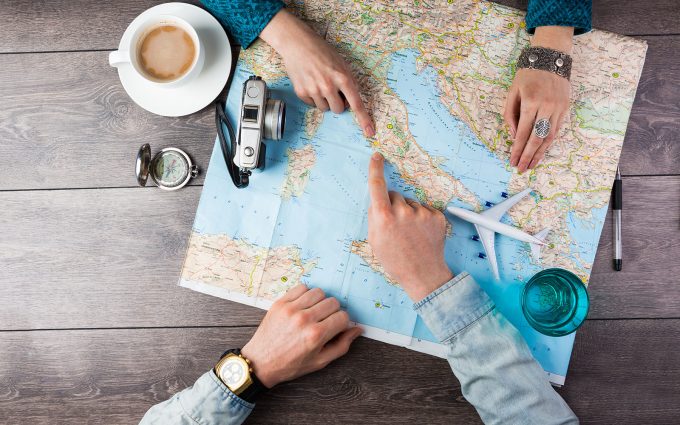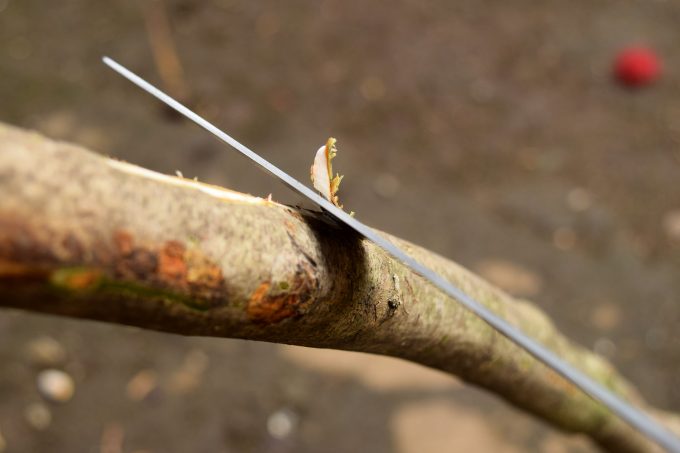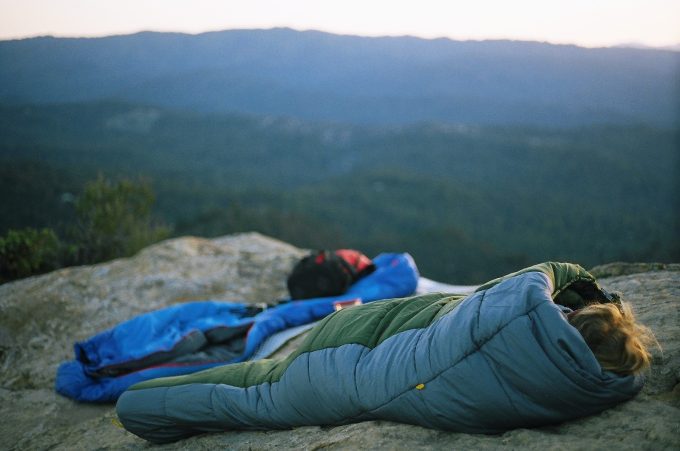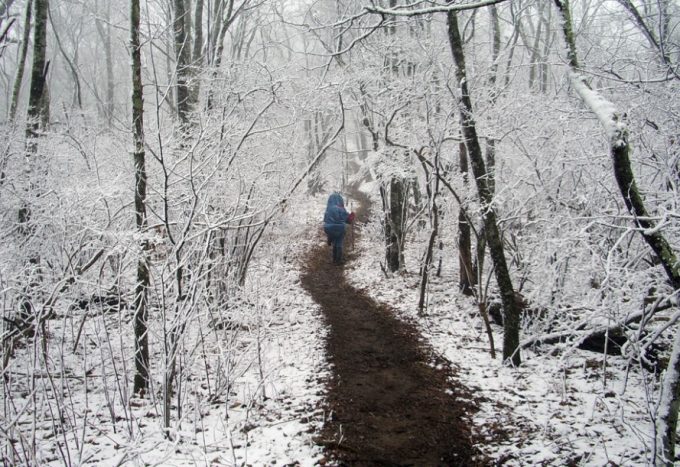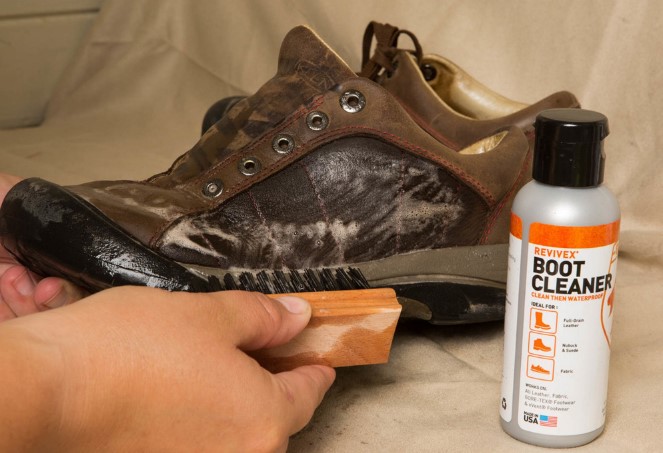How Many Calories Does Hiking Burn: How to Burn Calories through Hiking & Calorie Balancing Tips
There is a tendency of people gaining weight because of one reason or another. This leads to a number of modern lifestyle diseases, including joint problems, high cholesterol levels, high blood pressure, and cardiovascular diseases. Most of these problems are due to poor eating habits, and lack of exercise.
In actual fact, most people are in a position of doing something about their weight, but they simply choose not to take action. This article teaches you how to burn calories through hiking. Even though you might be asking yourself, “How many calories does hiking burn?” You should know that hiking is one of the best calorie burning activities.
Why You Need To Burn Calories
Every calorie counts in maintaining a healthy weight and lifestyle. According to research, a significant part of the world’s populace is either overweight or obese. In reality, obesity-related deaths are closing in on tobacco-related deaths. The highest risk factor resulting from high-calorie consumption is the progress of obesity.
This is when your body weight is approximately 20% higher than the normal body weight. The American Heart Association did state in September 2012 that 60% to 70% of the American people are regarded overweight or corpulent. It is suggested that the health risks of consuming too many calories do not stop with the progress of obesity.

As a matter of fact, a large number of weight gain problems are allied with too many calories. To the defense of most people, it is usually challenging to maintain the correct levels of calories for healthy living. This is so since people have dissimilar body composition, metabolism rate, as well as activity level.
It gets worse if you willingly take fewer calories, because this may lead to poor muscle mass. Therefore, the best way is always to burn the excess calories through physical activities, such as hiking. You need to clearly know the difference between overweight and obesity because they are not synonymous.
If your weight is 10% above the required weight, then you are overweight. However, an excess of more than 20% is regarded as obese. While hiking and running are the most effective activities for burning calories, it is still a lot easier for you to eat extra calories than hike or run them off.
That is the reason why you may end up carrying a few extra pounds even after months of exercise. To lose one pound, you have to burn about three thousand five hundred calories. Achieving this through hiking alone could easily take a few weeks of steady exercise.

In addition, ingesting five hundred fewer calories per day will lead to a loss of at least a pound a week. Therefore, it is not always about burning calories, there is much to do beyond hiking.
Burning Calories through Hiking
The calories you burn hiking depend on the terrain and what you have backpacked. Your weight matters a lot when trekking because this will determine how easy or difficult it will be for you to gain elevation. A 150-pound individual has the ability to lose a great number of calories when hiking ten miles while gaining at least four thousand five hundred feet in elevation.
Backpacking helps to burn even more calories because the extra weight from the pack forces you to use more energy to gain ground. Usually, a path’s distance is imperative, but the vertical gain on the terrain is crucial for cardio. The best trails to hike on are those with a vertical rise of one thousand feet a mile. This way you will burn approximately three hundred calories.
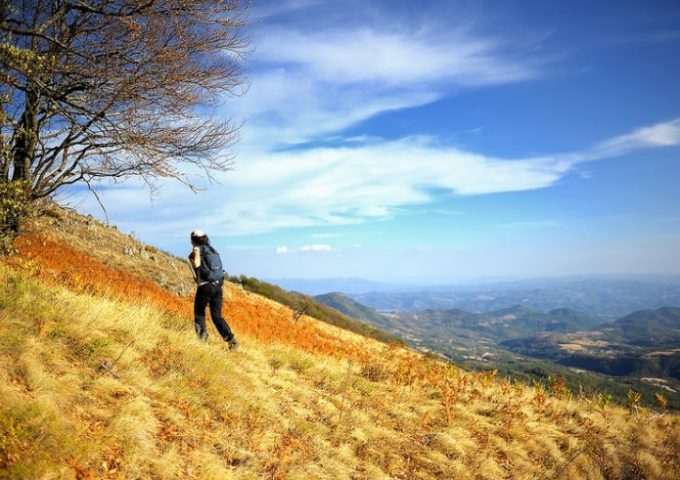
American Heart Association stats suggest that an individual who weighs 150 pounds has the ability to burn nearly 240 calories an hour when hiking over flat trail for a couple of miles. You can hike at different speeds that will consume you different time limits to burn the desired number of calories.
You can choose to hike leisurely, especially on flat terrain. Otherwise, you can hike purposefully on either a steep or flat terrain. Here are proper approximations you can use:
Calories Burnt During Hiking | |
Distance | Calories |
1 mile | 100 |
2 miles | 200 |
3 miles | 300 |
4 miles | 400 |
5 miles | 500 |
The number of calories burnt for every mile depends on whether you are walking leisurely or purposeful, and whether you are hiking on a flat or steep terrain.
Fitness Program
Knowing how to burn calories through hiking is not enough, you need a fitness plan to achieve the end goal. Your plan will need calorie counting. This simply means that you need to track the amount of calories you eat. This may sound quite complicated for some individuals, but you need to know the number of calories in any serving you consume.

Hiking burns calories, and the more you weigh the more calories you burn. The numbers of pounds you lose depend on the amount of calories you burn. You can easily determine the number of calories you burn in a span of 60 minutes of trekking if you base your math on 100 calories in every 20 minutes of hiking.
See also: How to Hike: Your Guide to Have the Best Hiking Experience
Walking is highly recommended for calorie burn, but it can be quite a challenge if you are obese. Nevertheless, a journey always has to start from somewhere. Therefore, you need to start walking, even if it is within your neighborhood, to start burning calories and get your blood circulating.
You should expect to feel muscle cramps at the beginning, but the soreness should wear off with time as your body adjusts. Hiking will be difficult to start, especially trail hiking, but you need to stay focused.
How to Burn Calories through Hiking
Step 1 – What to Backpack
This is probably one of the most important aspects of hiking. Backpacking allows you to carry everything that you may possibly need to survive during hiking. The best time to hike with the intent of burning calories is during the day.
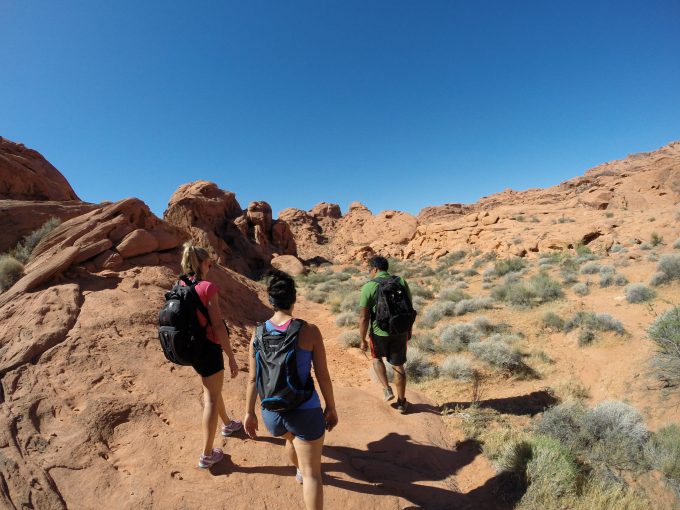
However, you are supposed to backpack for the entire day. The most basic backpacking items, especially if you will be trekking for a few days, include shelter, cooking supplies, clothing, tactical gear, hiking first aid kit, at least three liters of water, water purification supplies, and enough food for the days you will be on the trail. Check out our guide on the top backpacking gear must-haves to complete your hiking experience.
Some of the most important items apart from clothing are hiking boots, merino wool socks, trekking poles, and resourceful raingear. The boots you wear must be waterproof, which can protect your legs from the wet and muddy terrain.
Merino wool socks are good because they are insulating (keeps your feet warm), and they dry your feet by releasing any moisture produced by your legs. This ensures that your feet stay dry and blister-free. For the top hiking socks in the market, see our top-list for more options.
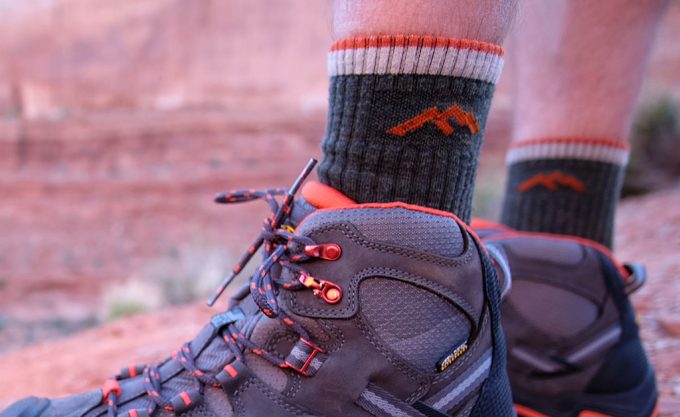
Trekking poles come in handy when you attempt to gain ground on a steep terrain. You need good rain gear that can safeguard you from unexpected rainfall (raincoat among others).
Step 2 – Respect Hiking Principles
- Respect wildlife and their natural habitat
- Avoid predator and human confrontation, especially when hiking on bear country
- Know the regulations, and any concerns for the hiking trail
- Always carry a GPS device, communication device, a map, and a compass for navigation
- Repackage food to reduce waste, and dispose of any waste properly to avoid attracting predators
- Backpack for extreme weather conditions even if the season tells you otherwise
- Never hike alone, do it with a partner or as a group
- Minimize campfires and always remember to put out any campfires in the morning before you embark on the trail
- Do not hike on dangerous trails, especially ones that are known to be dangerous
Step 3 – Where to Start
Hiking is the most recommended way for getting your body in shape. The most advantageous aspect of walking is that you can control the speed. You can choose to hike leisurely, purposefully, or in a fitness manner. Each time you increase speed, you are able to double up on the miles covered, and you burn twice as much calorie as possible.
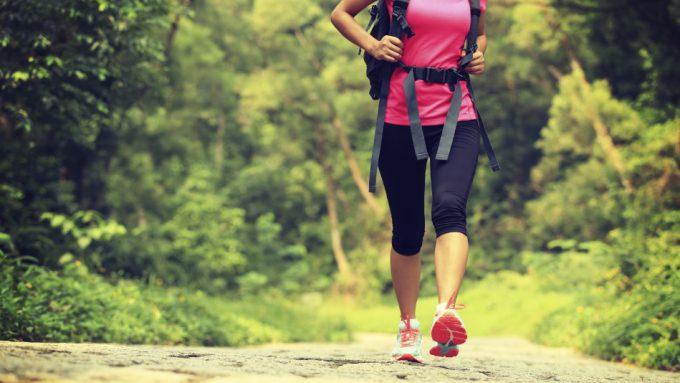
Your goal should be to trek at a steady and unbroken pace. Therefore, you have to start at a speed that will not consume too much energy to the extent that you are unable to converse with your colleague or family member. Your speed depends entirely on your current fitness, backpack, and terrain.
This is particularly so for people who have not hiked for a considerable period of time. This simply means that you need to take things slow. Do not force your body into a fast-start and end up not hiking at all. Consider a fairly flat terrain, if you have a lot of pounds to lose.
As you trek, take long and deep breaths to ensure that there is enough oxygen that will keep your muscles going while preventing the buildup of lactic acid. You will notice that your speed increases for each mile you cover. You must know the current state of your body before you begin a hike.
You might need to trek at a moderate pace for a very long time before your body adjusts, and you are able to increase your speed. The biggest mistake you can make is to overestimate or underestimate your fitness level.
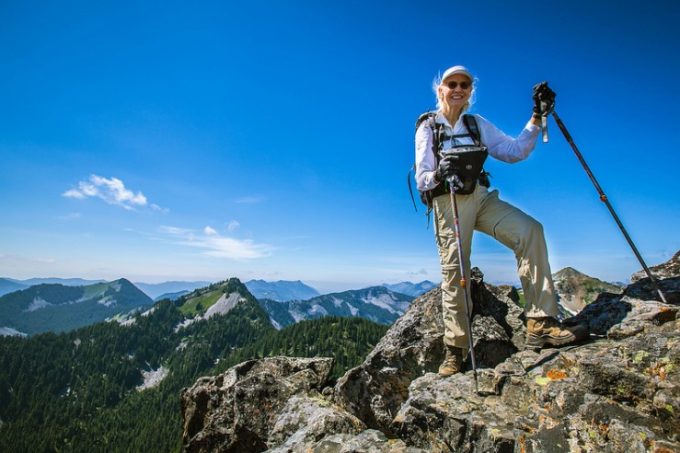
You should be more careful if you are suffering from any medical conditions, especially the ones associated with high-calorie intake, such as cardiovascular diseases.
Step 4 – Start the Hike
Once you have all the above-mentioned steps checked, you can go ahead and start the hike. If your fitness is good, look for trails with an elevation of 1,000 feet in a single mile. This should take you less than an hour to complete, and you will be able to burn a minimum of 300 calories.
You can choose to continue climbing or you can trek downward. You should only attempt hiking uphill if your fitness is good. Otherwise, you should stick to low terrain until you are physically fit to climb. Do not make the mistake of transforming the hike into an intense aerobic workout, which may result in an increased heart rate, forcing you to push yourself.
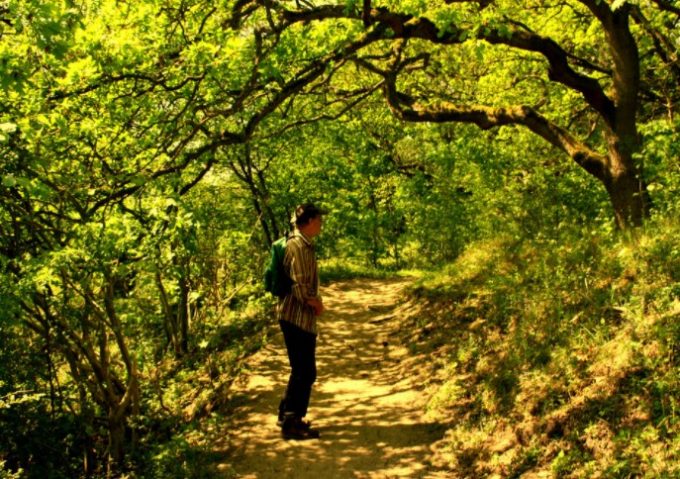
With respect to your weight, experts suggest that you can burn 300 to 600 calories when climbing 1,000 feet in one mile. Do not jump start when you weigh too much. A 30-minute hike on a flat terrain might not be enough for an athletic person. However, if you weigh more than 250 pounds, then this should be a reliable pace for you, probably 3 mph.
This speed may be too low for some hikers, but it is a significant one for a 250+ pounds individual, because this will allow such a person to burn hundreds of calories. The pace and amount of calories burnt should be increased gradually with respect to the body fitness.
Step 5 – Consider Diet & Other Factors
Hiking alone cannot effectively help you balance your calorie intake. You need to burn the excess, and regulate the intake to avoid relapsing. Remember to check your body mass index (BMI), because it is an important factor to the risk of you suffering from weight gain problems.
The BMI offers you a more comprehensive opinion of your fitness than just measuring your weight. What is considered an optimal target range is a BMI that falls between 20 and 25. To calculate your BMI, you need your height and weight.
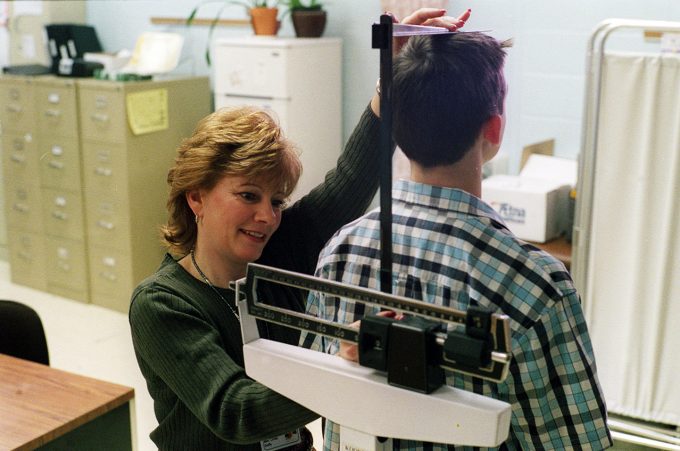
There are several online BMI calculators that you can use; all you have to do is Google search the phrase “BMI calculator”. The quality of food you consume and your mental attention to eating are very important. You should not eat for the sake of eating, but eat accordingly.
Most working class people tend to settle for junk/ quick foods. The problem with these foodstuffs is the high calorie content. Therefore, you end up ingesting more calories than your body can burn. Another bad habit most people tend not to avoid is skipping meals.
When you skip meals, you do not save calories. Instead you will end up consuming more calories because you will eat in excess. Therefore, you have to prioritize all the three meals, and make sure the portions are reasonable to avoid ingesting excess calories.
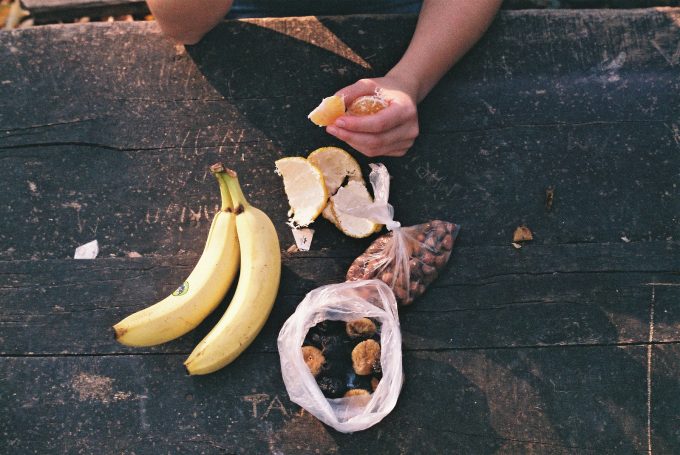
It is advisable to eat a sizeable breakfast, followed by a moderate lunch, and a fairly small dinner. Do not forget to drink the required amount of fluids.
Calorie Balancing Tips
Curb Cravings
Cravings are primarily encouraged by hormone disruptions and missing micronutrients. Hormone disturbances that lead to hunger develop from consuming specific foods that make you long for for that food. The plan needed for curbing cravings includes:
- Eat a variety of colors of vegetables and fruits.
- Overcome salty carb cravings with soup.
- Do not ingest junk food.
- Curbing cravings help you avoid foods that would increase your calorie intake.
Be Careful with Snacks
Most people see snacks as the ideal alternative whenever they experience blood sugar swings. Nevertheless, snacks are typical and they may drive you from consuming nutritious foods. Nuts and seeds make for a high-quality snack.
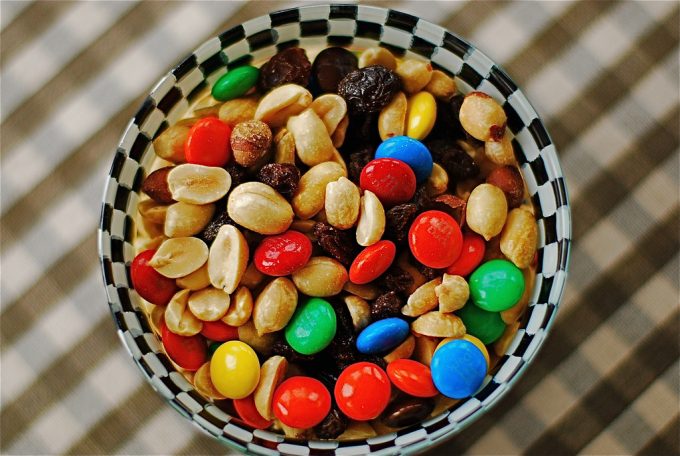
They offer a mix of protein, fats, carbs and fiber. Consuming just two ounces of nuts on daily basis can minimize the amount of calories ingested, and reduce post meal increases in blood sugar.
Monitor Blood Sugar
Apart from causing sudden spikes in your blood sugar, foods with high sugar content have high calorie content. If you do not burn them off, such calories will be stored in the body as fat. You can best monitor your blood sugar by using a glucometer. You must know how to use the device or else it will not do you any good.
You should be able to monitor your sugar levels at least four times in a single day. This is crucial, especially when you have a specific goal of burning calories. Do not be misguided by the conception that only people with insulin problems or diabetic are the ones supposed to use glucometers.
Focus
Earlier in this post, we mentioned that hiking can be done leisurely or purposefully. Therefore, you need to establish your focus. If you are into hiking as a way of spending a good time on the trail with a friend, a partner or a family member, then your focus is not on burning as many calories as possible.
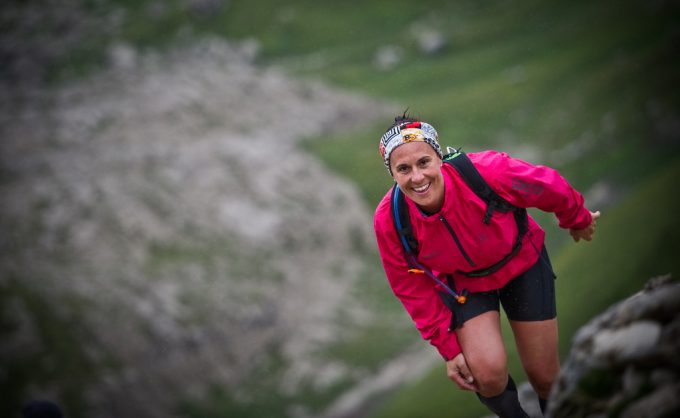
The focus has to come from determination, and the will to push forward even when you feel like giving up. Such are the experiences when you attempt to hike on a steep terrain.
In Conclusion
To lose a pound, you have to burn 3,500 calories. You can achieve this through hiking. In addition, you have to reduce your caloric intake through your food choices. Technically, you need to burn hundreds of calories. Hiking is effective if you do it right.
The calorie burning table presented earlier in this article provides you with estimates, but trekking 2 miles will certainly burn 200 calories. You should consider cutting calories from your diet to increase your calorie reduction if you cannot increase your hiking speed in time.
To see how hiking benefits your entire body, read our popular article on this topic for more insight.

